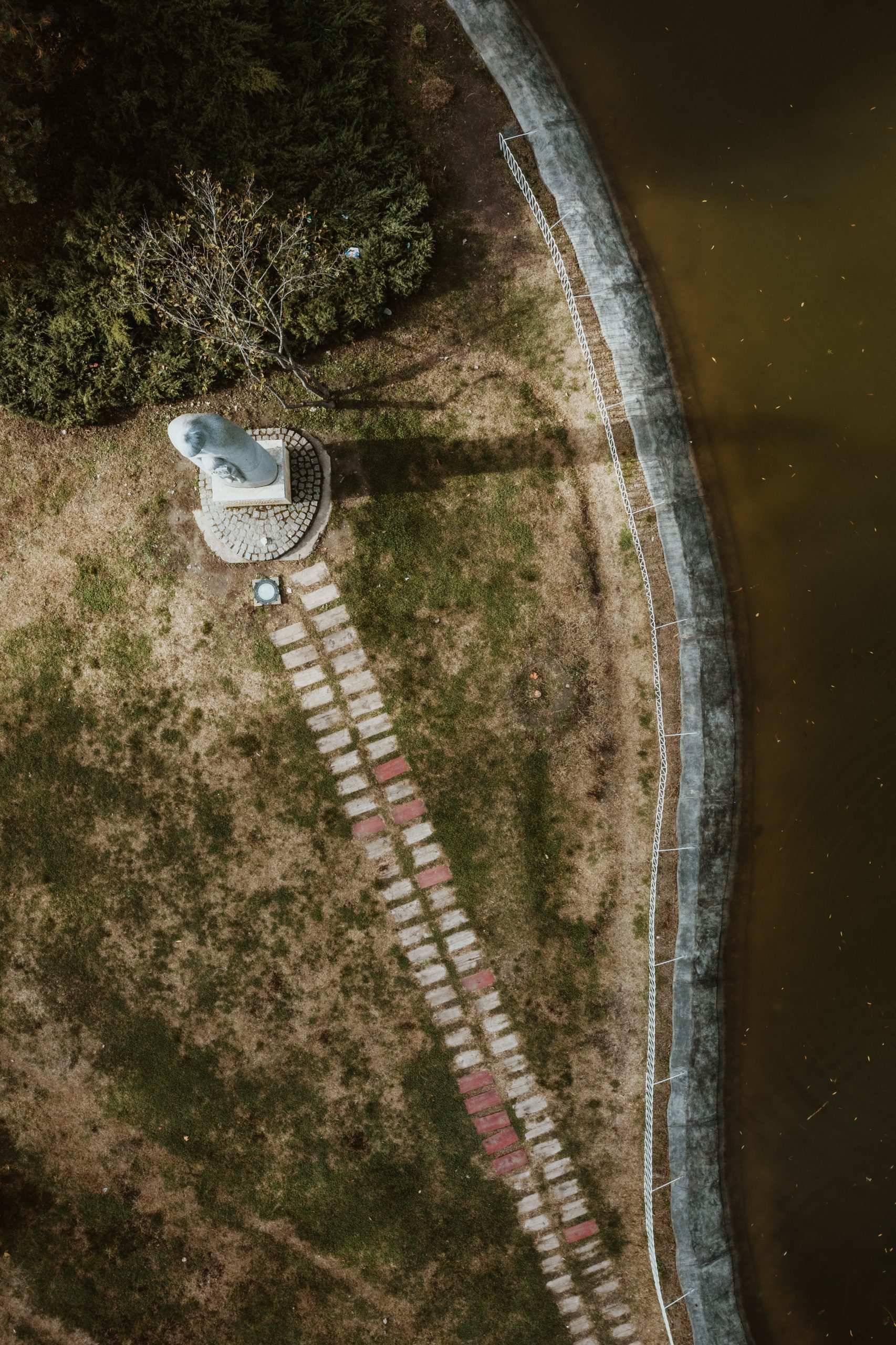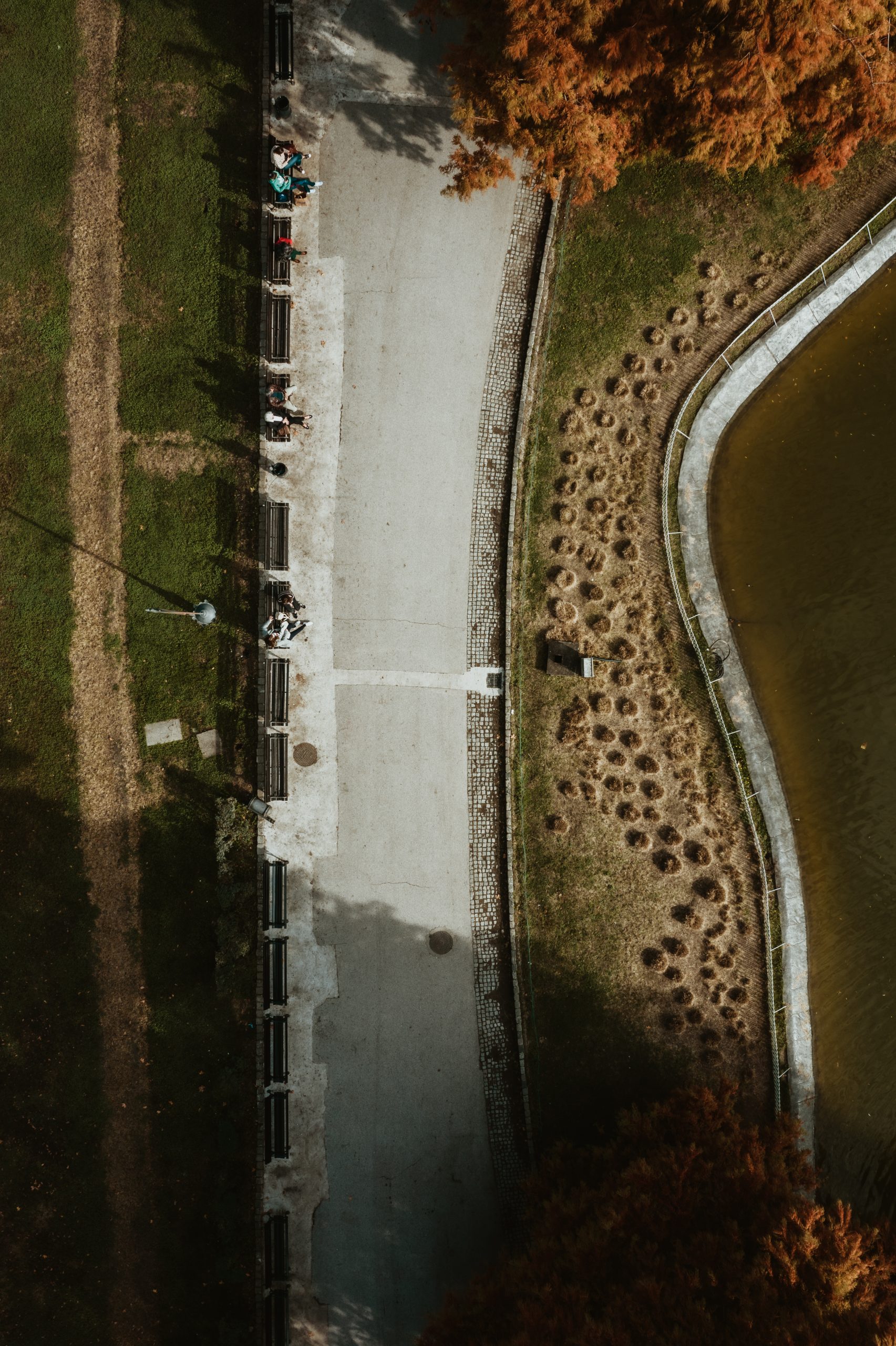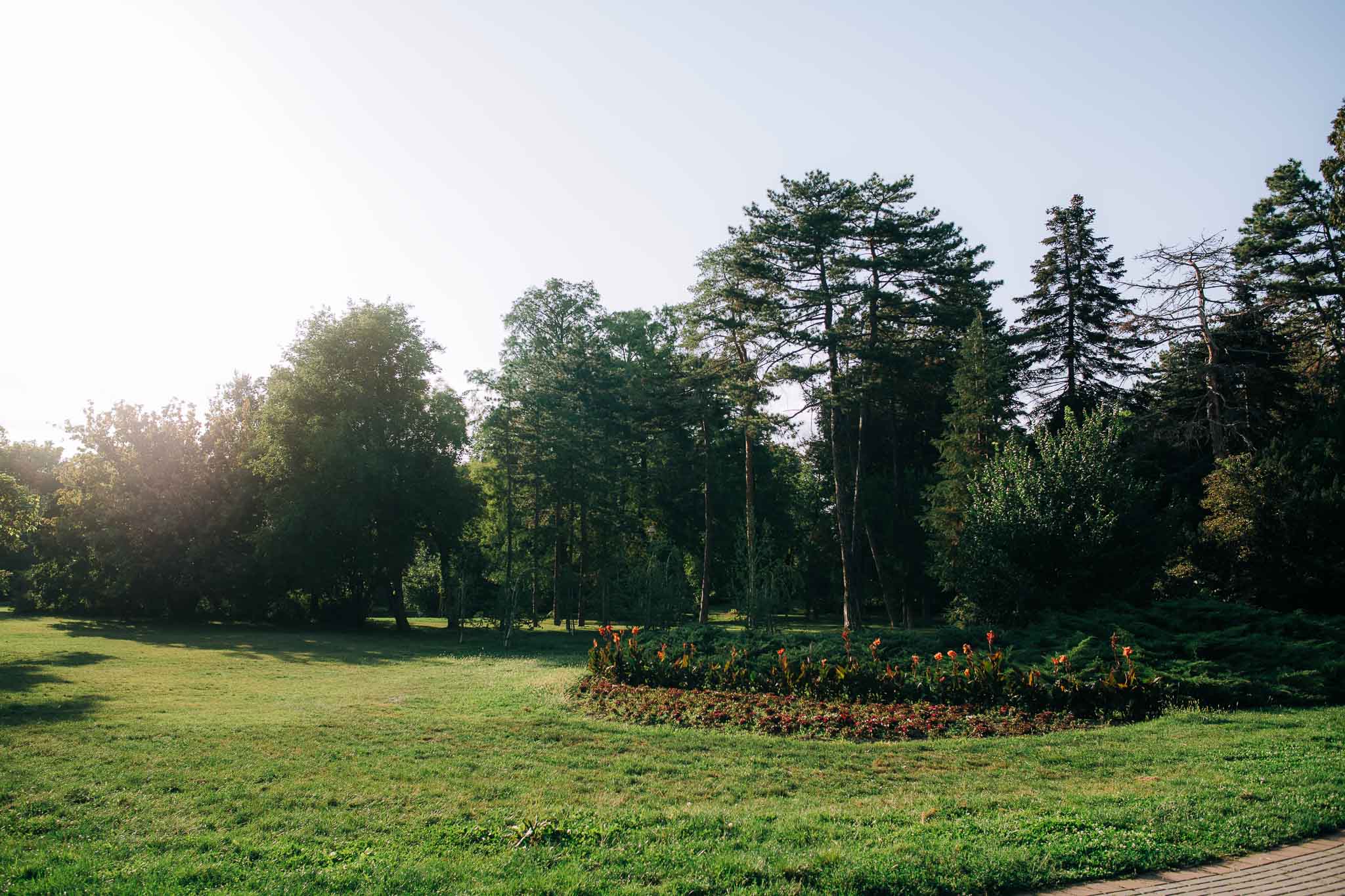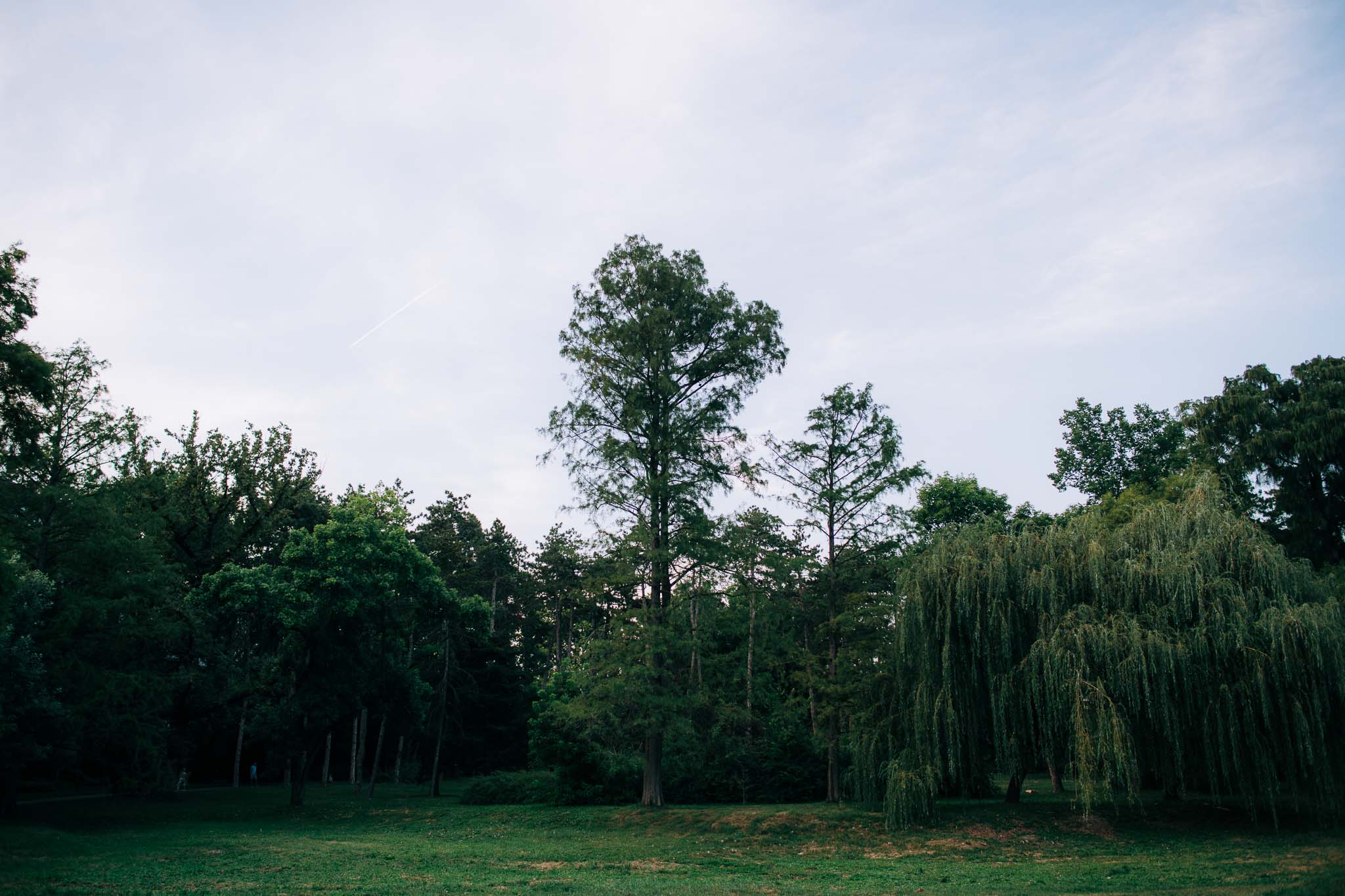Parks of Novi Sad keep us from the heat of concrete and heavy traffic. They provide shade and protect us from the increasingly hot Sun, connecting us with nature – something the whole society has started to turn to in the last couple of years, something we must take better care of. These natural monuments hide an abundance of protected species. Thanks to them, our city can breathe. They are the lungs of Novi Sad.
Out of the five most known parks in Novi Sad, three are natural monuments. Two of them originated in the 19th century and are part of the cultural-historical whole protected as cultural monuments. One park accommodates the two oldest oak trees in Novi Sad, which are over 200 years old, another is home to the smallest toad in Europe. They hide numerous monuments of prominent people from the field of culture and art in Serbia, fostering an incredible amount of plant species.
Kamenički Park – A Place Where Nature, History and Culture Intertwine
On May Day, Kamenički Park is probably the most visited spot in Novi Sad. It’s also people’s favourite place for long walks, mountain biking and picnics on weekends. You’ll need a bit more time in order to see the entire beauty of this park, thus, we recommend taking a whole day off just to walk through this park and escape the city’s hustle and bustle. Here’s what makes this place so unique: Kamenički Park is the oldest and biggest park in Novi Sad, it’s located on the north face of Fruška Gora. The natural monument was created in parallel with the construction of the castle of the Marcibanji and Karačonji families in the 19th century, based on the parks of Vienna and Budapest. The castle became a cultural monument, and together with the park represents a cultural and historical whole of great importance. Visitors can still see a couple of sculptures that are over one hundred years old, such as the Pompeiian Column, the Sphinx, Amor, and the most famous one – the Five Heads, located on the Hill of Roses. Some claim the Five Heads are actually the faces of the Karačonji family. Two-thirds of the park are covered in trees, there are more than 7500 trees in Kamenički park, wonderful lawns and walkways, such as the Danube promenade. There are both autochthonous tree species and exotic plants from across Europe, as well as 86 bird species and 71 types of poisonous and edible mushrooms. Kamenički Park includes two ponds and two oldest oak trees in Novi Sad, dating back to 1805.
The Danube Park – Symbol of Novi Sad
This natural monument is located in the very heart of Novi Sad, some claim it’s the prettiest park in the city, a park that lures people in to take a break from their hectic lives, buy popcorn at the entrance to the park and sit on a bench. The Danube Park is everyone’s favourite place. Parents, kids, students who come here to revise everything before the exam (since the campus is nearby), tourists who sit with their heavy bags to rest from all the walking around the city, grandparents running after their grandkids around the lake, and those who miss nature and want to read a couple of pages or eat an ice cream lying on the grass – literally everyone comes here! The Danube Park also originated in the 19th century, at the sight of the former big lake and a lawn fairs used to be organised on in the past. The park is placed under the protection of the Institute for Nature Conservation of Serbia, with more than 250 plant species and numerous rare types of trees. Their most known inhabitants were the former two doves, Isa and Bisa, a couple! They became one of the trademarks of Novi Sad.
There are busts of some of the greatest Serbian poets, such as Branko Radičević, Miroslav Mika Antić and Đura Jakšić. There are also the Nymph statue and monument to Sergej Radonješki. In addition to that, the Danube Park is a place of many cultural events, including exhibitions, performances, concerts. It turns into an open skating rink during the winter, while the celebration of the children’s New Year’s Eve, as part of the programme of Doček, within the preparations for the European Capital of Culture, was also held in the Danube Park.
Futoški Park – Green Oasis in the Middle of the City
Somewhat younger than the abovementioned parks, Futoški Park originated at the beginning of the 20th century. Despite being located in the middle of a hectic city, it offers a feeling of cosiness, making you feel like you left the city with the lovely scents of numerous exotic and autochthonous plant species and chirping of the birds, but a couple of squirrels as well! This natural monument, i.e. protected natural resource, was created for special purposes of Jodna Banja (a spa, i.e. special hospital for treating rheumatic diseases, located right next to the park). Today, Jodna Banja is a cultural monument, constituting a cultural-historical entity of great importance together with the park. The park was modelled on the European parks back in the day, and designed by the famous Hungarian landscape architect Armin Pes Jr.
What’s interesting and less known even to the citizens of Novi Sad, is the fact that the smallest toad in Europe, a European fire-bellied toad, lives in Futoški Park. You’ll recognise them by their red or orange bellies, as their name suggests. In the southwest part of the park, there is a shallow pond supplied from the atmospheric water and fed by groundwater, a couple of geothermal springs, and seven wells. The park is proud of its vital and decorative trees, with the two American tulip trees being the oldest recorded specimen of these trees in Novi Sad. An oasis that will bring you peace any time of the day with its walkways and lawns. There’s a playground for children as well.
Limanski Park – Sport and Urban Culture
Limanski Park is a youngster among the parks of Novi Sad, given it was opened during the 70s, when Liman, one of the youngest and greenest neighbourhoods of the city, was built as well. It’s the biggest park within the city, favourite spot for dog owners since it has a separately fenced space for dogs, as well as broad lawns, a skate park and basketball courts, which is amazing if you’re a fan of the urban street culture or adrenaline and sports. At the other end of the park, a particular sport called bocce is played. Do you know what it is? It’s one of the oldest sports from the former Yugoslavia, played usually in seaside towns. Right next to the bocce court, there’s a playground for children. The park originated on a sandy soil and is adorned by the wonderful cottonwood, willow tree, birch, oak tree and spruce. There’s a drinking fountain at the entrance to the park.

At another entrance to the park is the Subin plateau, dedicated to one of the greatest music producers and pioneers of electronic music in the former Yugoslavia – Mitar Subotić Suba (hence the name of the plateau). In addition to being suitable to sports and recreation, the park hosted numerous events such as the Novi Sad Uranak, which is a day-long event presenting young bands, it is held on 1 May. Then there’s the Chinese Lantern Festival, the Tastes of Vojvodina gastronomic festival, as well as Cinema City, an international film festival. In the vicinity of the park and right next to the Danube bank is the future centre of contemporary creation, which presented itself to the audience during the Kaleidoscope of Culture in 2020, and on 13 January this year, within Doček.
Železnički park – The Sounds of Rock ’n’ Roll and Punk
This is the first green oasis you’ll stumble upon when arriving in Novi Sad since it’s located in the vicinity of the Railway and Bus stations. Similar to Limanski Park, Železnički Park also has playgrounds for children, walking trails, space for dogs and huge lawns. Despite being located amidst the city’s hustle and bustle, the park is a true oasis where grandparents, parents and their kids have been spending more and more time recently, but also travellers who come here to chill while waiting for their bus or train. Since 1998, Železnički Park has been home to one of the oldest active rock ‘n’ roll festivals in Novi Sad – Blokstok. The festival gathered some of the greatest musicians of the local rock and punk scenes, such as Atheist Rap, Amajlija, Zbogom Brus Li, Prljavi Inspektor Blaža i Kljunovi, Gužva u 16-ercu, Zona Katastrofe, Ritam Nereda, Mortal Kombat and other bands.
Author: Milana Milovanov
Photo: Vladimir Veličković, Jelena Ivanović











